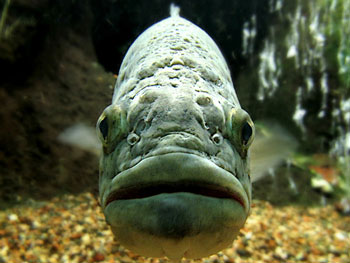Gloucester Cod Fishing on Tuna Hunter
July 6, 2011Annual Nivens Family Gloucester Fishing Bonanza
July 14, 2011Fish long enough and you’re bound to end up with a fishhook injury. It’s just plain old probability – every time you fish, you’re stacking the deck against punctured fingers, snagged skin, and other unpleasant situations caused by fishhooks ending up somewhere other than in the mouth of a fish. Are fishhook injuries funny? We’ll let you draw your own conclusions in that regard, but we will say that fishhook injuries are definitely painful for those who are experiencing them.
In a best case scenario, fishhook injuries are avoided altogether by sticking to safe practices and paying attention to what you’re doing at any one time. Concentration while casting and care when picking hooks out of tackle boxes will go a long way toward never having to deal with fishhook injuries like a fishhook through a finger.
But even when someone is handling hooks with skill and care, accidents can and do happen. It pays to know how to remove a fish hook from a finger or other body part BEFORE you find yourself in a situation that requires such knowledge so you can calmly deal with the problem in front of you and a minor injury doesn’t become something more frightening for those involved. That’s where we come in. Below, you’ll find our guide to removing a fish hook from a finger or other body part.
1. Analyze the hook structure and its placement in the body. A fish hook in or near the eye is a serious medical emergency, and you should not attempt to remove it on your own. Go straight to the nearest emergency room or call an ambulance. The same goes for a fishhook embedded anywhere else in the face or very complicated hooks with multiple barbs. Don’t attempt to remove it yourself.
2. No matter what method of removing a fish hook makes the most sense in your situation, wash your hands with soap and water, and also cleanse the injury site before doing anything else.
3. If the person who has been injured is frightened or nervous about fishhook removal, take a moment to explain what you are going to do and reassure them that while extraction of the hook may hurt a little, it will only hurt for a short time. Some people find removing a fishhook basically painless, while others report the experience as much more uncomfortable.
4. In some cases, a fishhook can simply be backed out of the injury site without much effort or pain. If you can simply remove the fishhook – if it’s not a barbed hook, for example, or if only the tip is embedded – it’s better to do so than to attempt any more complicated removal methods below.
5. The push and cut method is useful for hooks with one barb or barbs only at the end and involves pushing the hook further in until the barb has come all the way through the skin. Next, cut the barb off using wire cutters – making sure to clean any tool used for this purpose thoroughly. Finally, pull the shank of the fishhook back through the original hole and clean the injury site with soap and water, applying antibacterial ointment if possible.
6. The string pull method involves tying a length of fishing line or string to the bend in your hook and pushing the shank of the fish hook down parallel to the injured tissue. This disengages the barb inside the wound site. Then the string is pulled, hard and fast, in the direction that the hook entered the tissue, removing the hook with minimal pain and damage to tissue.
7. For hooks with multiple large barbs or barbs on the shank, consider seeing a medical professional rather than attempting removal yourself because the risk of tissue damage and the chances for bacteria to enter the wound site are greater.
8. Avoid attempting to remove fish hooks near joints, bones, tendons, ligaments, or arteries – those are best left to professionals. When in doubt, leave a fishhook where it is because removing it yourself may cause more damage than simply waiting.
9. Always watch the site of a fishhook injury for signs of infection, like swelling, redness, pus, or skin that is hot to the touch. Fish hook injuries are almost always minor, but the bacteria that can enter a wound when the fish hook goes in or comes out can cause problems that go beyond a simple wound.

